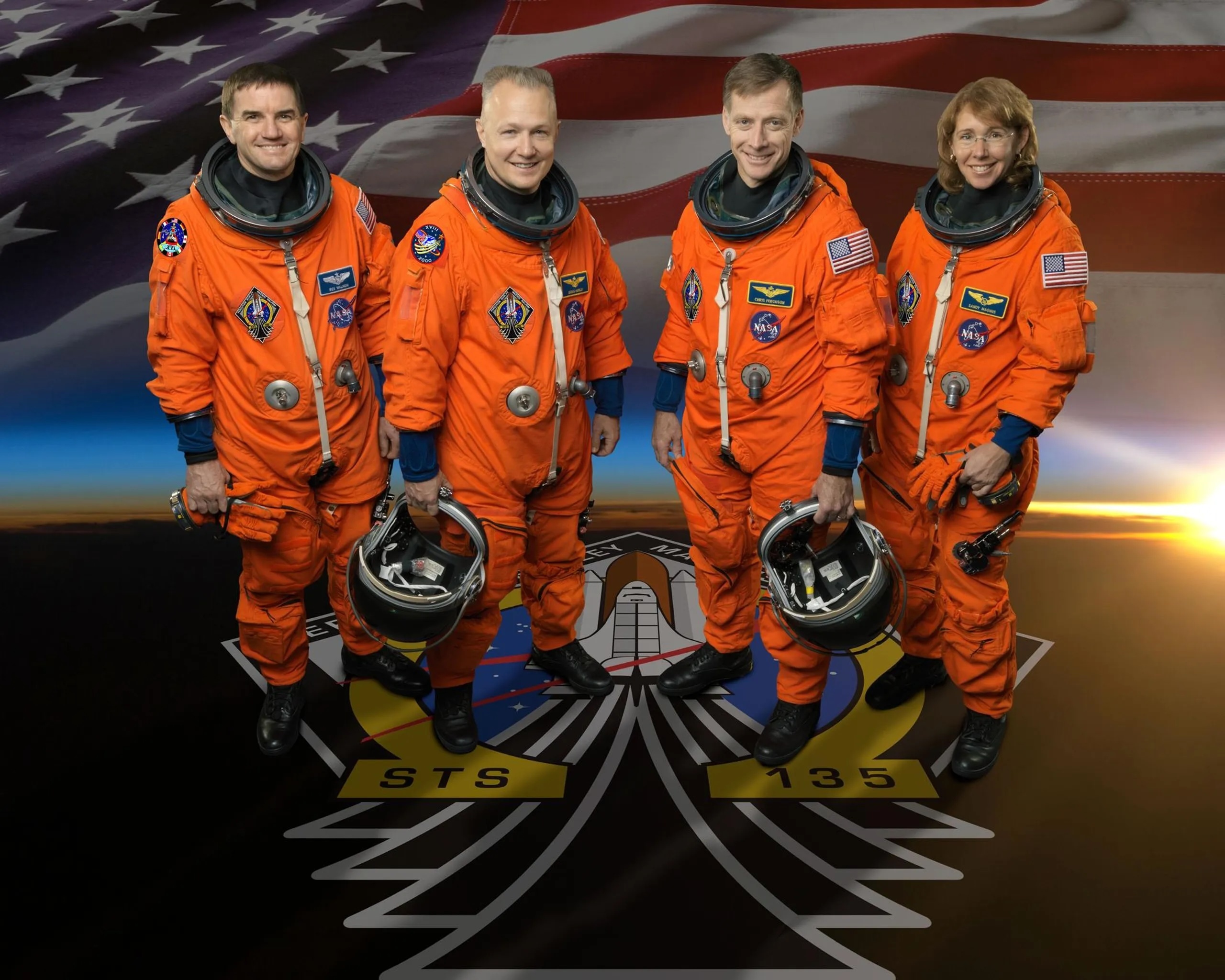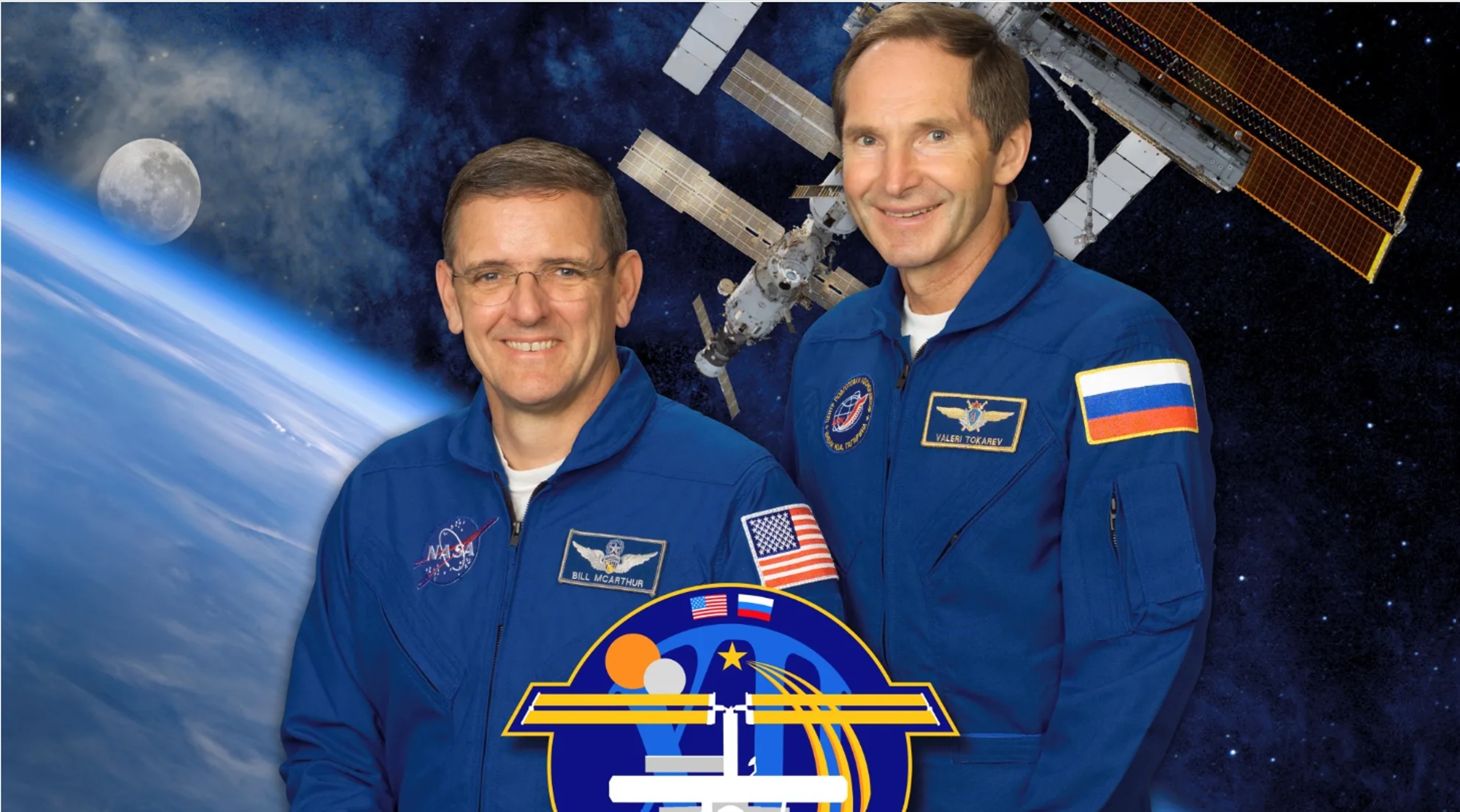6.10.2025
It's official. Not a single person under the age of 25 has lived a day where there has not been a human orbiting Earth − and that is likely to never change.
On Nov. 2, 2000, Expedition 1 arrived at the still-under-construction International Space Station. And since that day, this outpost that orbits 250 miles above the Earth has never been uninhabited even as its construction continued.
That's almost 25 years of human life traveling around the Earth 16 times a day.
The space station is the size of a football field with a habitable interior about as big as a six bedroom house. Onboard, crews ranging in number from seven to 13 live and work together for stays that can be as short as seven days or as long as a year.
But this 27-year effort − with the first pieces launched in 1998 − to build a truly global orbiting outpost is coming to the end of its lifetime. NASA has begun making retirement plans for the space station. SpaceX is contracted to provide the vehicle that will safely deorbit the space station into the ocean − sometime after 2030.
How the ISS started
The space station began as a partnership between NASA and ROSOSMOS, the Russian Space Agency, but expanded to involve many other nations as well.
As of August 2025, 290 individuals from 26 countries have visited the station. Astronauts and cosmonauts are the primary visitors but it has also welcomed a few space tourists as well as private industry astronauts. It's also been a port for multiple spacecraft from Russia's Soyuz to the now-retired American space shuttle, as well as SpaceX Dragon, the ill-fated Boeing Starliner and American, Russian, European and Japanese cargo ships.
For those who played a role in its 23-year construction − the final Russian module added in late 2021 − the space station remains one of the world's most impressive spacefaring achievements.
“They said building the space station was like building a submarinewhile you’re trying to live in it,” former NASA astroanut Chris Ferguson said in an interview with FLORIDA TODAY.
Former NASA astronaut Bill McArthur flew on space shuttle mission STS-92, which was an early major construction mission for the space station. Launched in October 2000, McArthur’s mission installed the Zenith Z1 Truss, which was the first permanent fixture of the ISS.
“It was a thrill,” said McArthur. “We were building the International Space Station. We didn’t visit it − we built it."
Ferguson first visited the ISS as the pilot of the STS-115 mission, which resumed construction on the space station in September 2006 following the 2003 Columbia tragedy.
“It’s amazing how they managed to make these changes so they could add on large modules or relocate modules to get towards a final configuration, while still allowing day to day life and science,” said Ferguson.
Ferguson returned to the ISS on STS-126 in 2008, and again on the final space shuttle mission, STS-135, in 2011.
“Every time I went it looked dramatically different,” he said.

NASA astronaut Chris Ferguson (center right) poses with the crew of STS-135 - which was the final space shuttle mission. Also pictured are Doug Hurley (center left), Rex Walheim and Sandy Magnus.
Even during times when construction slowed, habitation never ceased. For example, American astronauts stayed onboard during the grounding of the space shuttle after the Columbia tragedy in 2003.
McArthur was onboard from October 2005 to April 2006, a period when shuttle flights were just resuming following the tragedy. Science was slow, and contruction had come to a halt.
“We were caretakers. We were there because realistically the likelihood of ISS’s falling without a crew onboard goes up pretty significantly,” McArthur told FLORIDA TODAY.

Ferguson agrees. He noted that people lived on the ISS during the 9/11 terror attacks, as well as throughout the 2020 Covid-19 pandemic.
“Think about all the things we’ve managed to overcome − whether it was something in space or something more terrestrial, but they were global events and we just sort of plowed through and kept doing it,” Ferguson said.
ISS dangers in orbit
But it wasn't always easy or smooth.
The International Space Station is the longest operating space station in history. Its Russian predecessor, the Mir space station, only hosted crews for a total of 14 years − lasting from 1986 until 2000.
In addition to the ISS beginning to show its age, space can serve as a constant threat to humans onboard. Factors ranging from solar storms to orbital debris and even human or machine error can jeopardize the lives of those living on the outpost.
In November 2024, the thrusters on a Russian Progress spacecraft, docked to the station, needed to be fired to adjust the orbit of the ISS in order to move it out of the path of debris from a since destroyed defense satellite. It was estimated that debris would have come within two and a half miles of the ISS − too close to be safe. Since debris orbits Earth alongside the ISS at speeds of over 17,000 mph, a collision could be catastrophic.
The ISS has also seen its share of incidents and leaks which have possibly come from small collisions. In October 2023, the ISS suffered its third coolant leak in the span of a year when a backup ammonia coolant radiator on the Russian Nauka module began spewing the coolant into space -- giving off an effect that looked like snow. The Russian Space Agency cited damage from orbital debris or micrometeoroids as the cause.
But it's not just the harsh environment of space − machine error can be a threat, too.
In July 2021, the same Russian Nauka module, which had just been installed, experienced an unexpected firing of its thrusters. The unplanned motion briefly moved the ISS out of orientation. While NASA claimed the crew onboard was never in danger, it served as a reminder of the risk of mechanical or computer errors.
What comes after NASA's International Space Station?
When the space station is retired, it will bring an end to a global experiment. But it's not likely to bring an end to human habitation in orbit.
Even with its sights and budget aimed at the moon and Mars, NASA has begun the work to transition activities on low Earth orbit to commercial contracts, meaning using space stations created by private companies.
Axiom, VAST, and Voyager are working to launch orbiting space stations within the coming years.
But why would NASA continue to pour money and resources into low Earth orbit after a continuous presence of three decades?
“There’s going to be a day when we leave Earth orbit and we go to Mars, or someplace else,” said Ferguson. “That’s a three-year trip back and forth, and we’re going to have to have all of this figured out.”
Those close calls on the ISS throughout the years serve as a reminder of just how treacherous spaceflight can be − and that's only 250 miles above Earth's surface.
“There’s going to be no margin for error, because there’s no turning back,” said Ferguson. “You can’t stop halfway. There’s no Ace Hardware. You have to pack for a journey where you really don’t know what’s going to happen.”
What is the next step?
“NASA is using a phased approach to support the design, development, and demonstration of commercially owned and operated space stations in low Earth orbit from which NASA, along with other customers can purchase services and stimulate the growth of commercial activities in a microgravity marketplace,” NASA’s website states.
Axiom Space is the most involved. Axiom has already had four astronaut crews visit the ISS in preparation, each one led by a former NASA astronaut. Most recent was the Axiom Space Mission 4 in June 2025, which was commanded by former NASA astronaut Peggy Whitson.
Axiom holds an upwards of $140 million contract with NASA for a module, known as Habitat 1, which will attach to the Node 2 forward port of ISS before its retirement -- and subsequently detach to become an independent station.
After detached, Axiom will continue building the Axiom Station, adding an airlock, Habitat 2 module, and the Research and Manufacturing Facility.
Voyager Space reports that it has been awarded $217.5 million for its Starlab program. The Starlab space station is a joint venture across Voyager Technologies, Airbus, Mitsubishi, MDA Space, and Palantir Technologies. The main structure will be manufactured by Vivace Corporation.
Starlab boasts “a next-generation, AI-enabled commercial space station”.
Meanwhile, Vast Space plans to launch its Haven-1 as soon as May 2026, reporting on Sept. 17 that Haven-1 is fully welded and ready to begin testing.
“The world’s first commercial space station,” reads Vast’s website.
Vast Space is not under contract with NASA but plans to support both private and government missions.
Of course, these space stations are likely to see a tourism industry for those wealthy enough to afford a heavy price tag − after all, we have already seen many tourists fly to the ISS on the Russian Soyuz over the years.
McArthur noted that while some may envision a space station equipped with artificial gravity, that wouldn't be practical for research. Though, tourists might enjoy it.
"You take away the unique research environment,” said McArthur.
“It allows us to study materials − whether they are just construction materials, or alloys, or biological samples − we can study them in an environment that takes away the effects of gravity here on Earth so we can develop a more fundamental understanding of how these objects behave," said McArthur.
By involving the private sector in an orbiting outpost, NASA can fully shift its focus to the moon. The space station is expensive to maintain, costing upwards of $3 billion per year in NASA's budget.
“In spite of what NASA has learned on station over the last 25 years, and what will continue to learn until 2030, there will always be more to learn,” said Ferguson.
NASA plans to return to the moon and stay with the Artemis program − currently funded through Artemis V. Artemis II is set to fly around the moon on a test fligh no earlier than Februaby 2026, with Artemis III set to land astronauts on the moon for the first time since the Apollo missions.
“Once we figure that out, then it will be time to go to Mars,” McArthur said.
Notable International Space Station highlights
- November 20, 1998 − The first module of the International Space Station, Zarya, was launched from the Baikonur Cosmodrome in Kazakhstan aboard a Russian Proton rocket.
- December 4, 1998 − The first American module of the International Space Station, Unity (Node 1), launched aboard the STS-88 space shuttle mission (Endeavour).
- May 1999 - The STS-96 mission (Discovery) marks the first space shuttle mission to dock to ISS.
- July 12, 2000 - Russian module Zvezda arrives.
- November 2, 2000 − The first crew to live and work on the International Space Station, Expedition 1, arrives. The three-person crew consisted of NASA astronaut William Shepherd and cosmonauts Yuri Gidzenko and Sergei Krikalev. The four-month mission launched on a Russian Soyuz.
- November 30, 2000 – First solar arrays arrive aboard the Space Shuttle STS-97 mission (Endeavour).
- Feb 7, 2001 – U.S. Destiny lab added.
- April 2001 – First private citizen, Dennis Tito, launches to ISS aboard a Russian Soyuz.
- April 19, 2001 – Canadarm2 launched to the ISS on the STS-100 Space Shuttle (Endeavour) mission.
- July 28, 2005 – The STS-114 mission (Discovery) marked the first shuttle to arrive post-Columbia tragedy.
- • Feb 7, 2008 - European Space Agency's Columbus Laboratory added.
- March 11, 2008 – JAXA Kibo laboratory added.
- April 3, 2008 – ESA European Automated Transfer Vehicle (ATV) arrives at the ISS for the first time.
- Sep 10, 2009 – JAXA H-II Transfer Vehicle (HTV) cargo spacecraft first arrives at the ISS.
- July 8, 2011 − Last Space Shuttle mission – STS-135 (Atlantis) − launched.
- May 25, 2012 – First SpaceX Dragon reaches ISS, becoming first private company to dock a spacecraft to the ISS. It was the COTS 2 mission. SpaceX was contracted by NASA to deliver cargo to the ISS after the shuttle retired. This Dragon spacecraft is in the Gateway exhibit at Kennedy Space Center Visitor Complex.
- September 29, 2013 − Orbital Sciences’ Cygnus docks to ISS after launching from Wallops Island, VA. The company merged with Alliant Techsystems in 2014 before being purchased by Northrop Grumman in 2018.
- May 30, 2020 – SpaceX launches DEMO-2, marking the first private company to deliver NASA astronauts to the ISS. The mission certified SpaceX to ferry NASA astronauts.
- November 15, 2020 − SpaceX Crew-1 launched.
- June 5, 2024 − Boeing Starliner spacecraft launches flight test crew to ISS, docking after helium leaks and thruster issues plague the spacecraft.
Quelle: Florida Today
